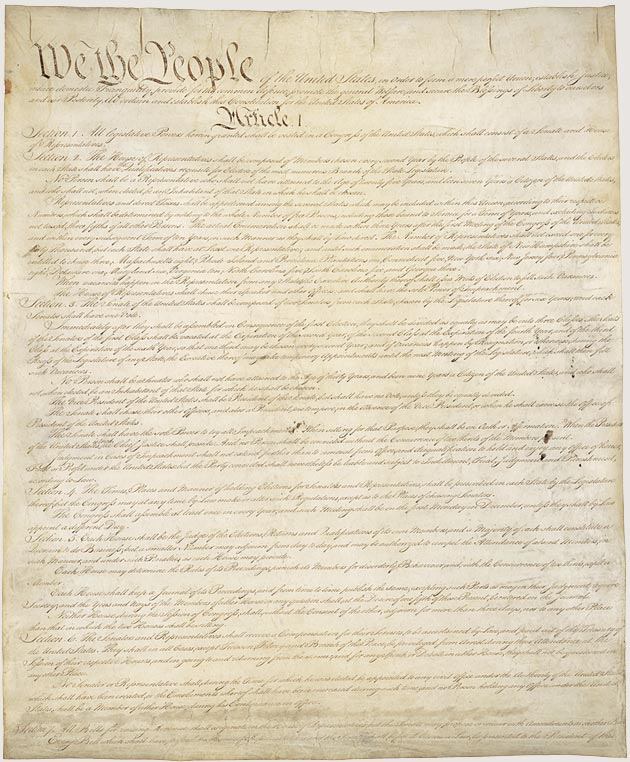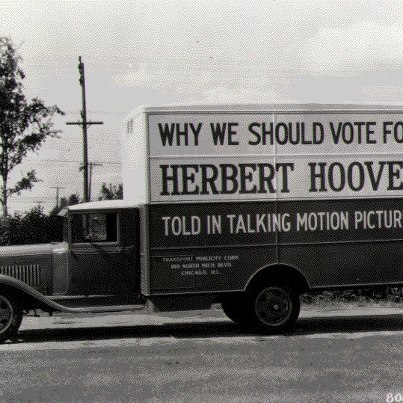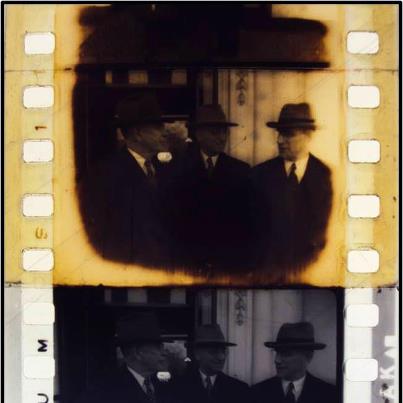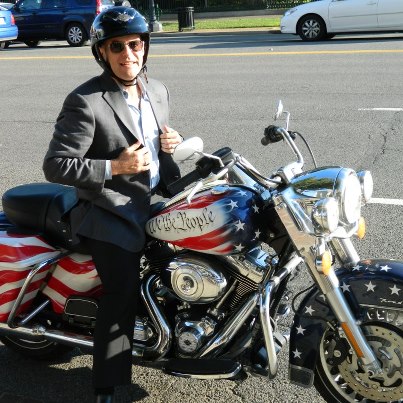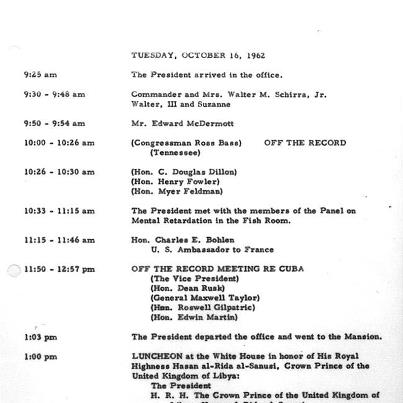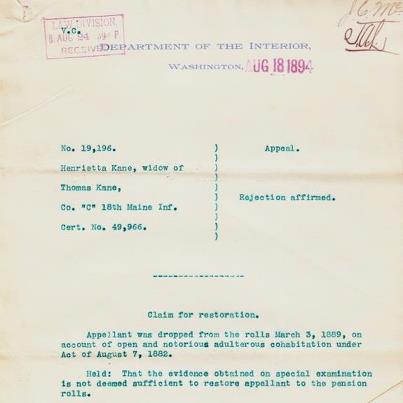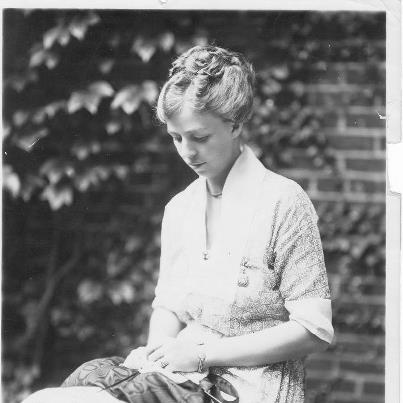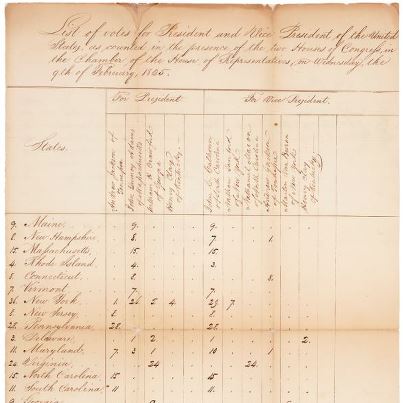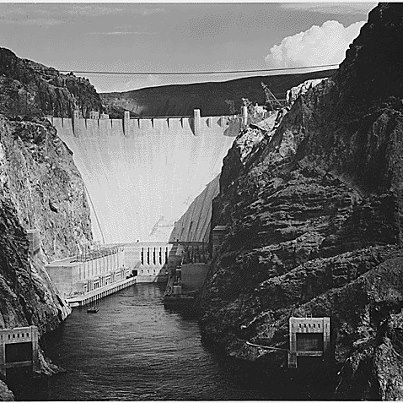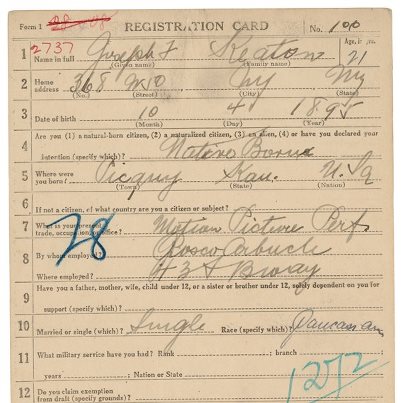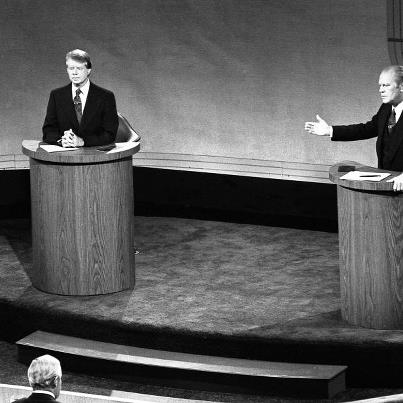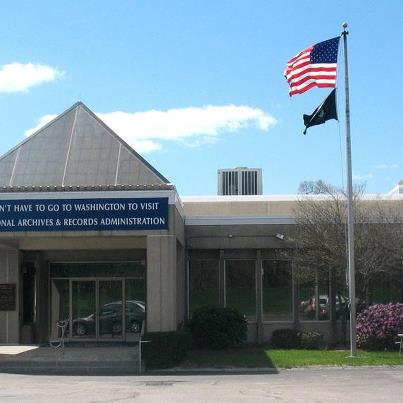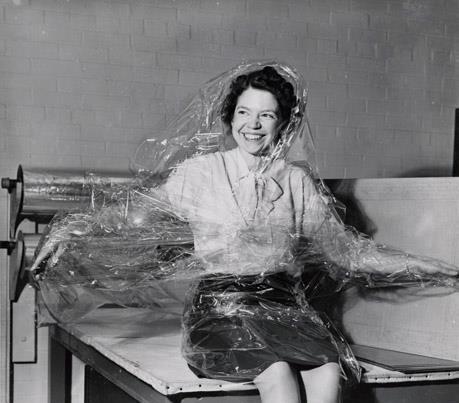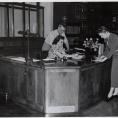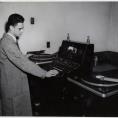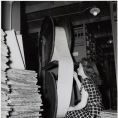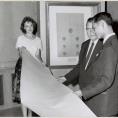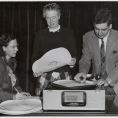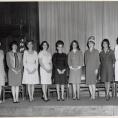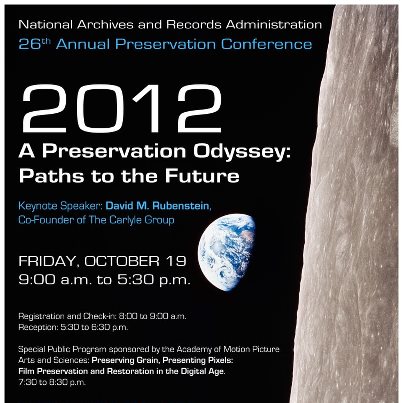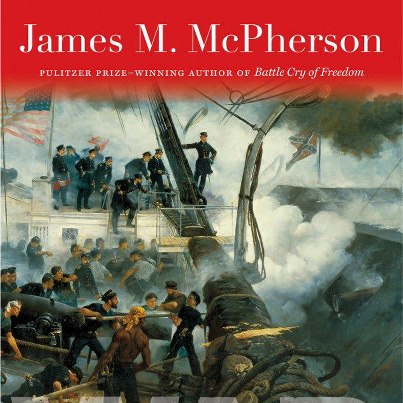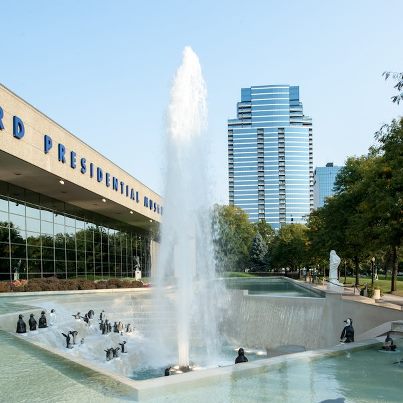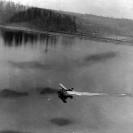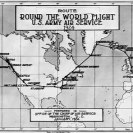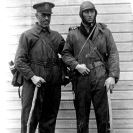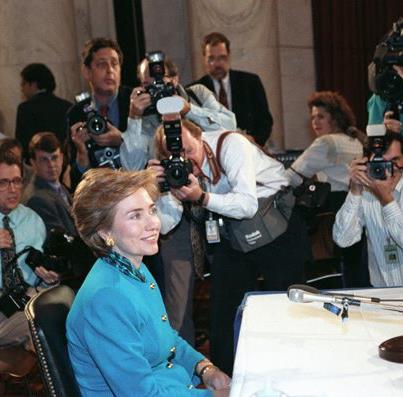- Also On
- This campaign truck for Herbert Hoover advertises “talking pictures,” which were to 1928 what Twitter was to 2008!
We're continuing our American Archives Month celebration on our Pieces of History blog. Today's spotlight is on the Herbert...Hoover Presidential Library and Museumin West Branch, Iowa.See More
The library has an unusual location: it's inside of a National Park. And the archival contents are no less unusual. Along with official Presidential correspondence, there is flour sack art, typescript drafts of several of Laura Ingalls Wilder's "Little House" books, and paintings from World War I in support of the Food Administration.
Learn more about the material available for research or plan a visit to the museum: http://go.usa.gov/YRRx
Photo via http://ourpresidents.tumblr.com/ - LikesSee All
- National Archives Noon LecturesGovernment Organization
- National Historical Publications and Records CommissionGovernment Organization
- Federal RegisterGovernment Organization
- National Archives eStoreGovernment Organization
- Preservation Programs at the U.S. National ArchivesCommunity & Government
- Are you interested in film and film history? Wondering what the switch to digital film means for archives that preserve film? Don’t miss our big program Friday night!
The National Archives will host a special panel discussion on “Preservin...g Grain, Presenting Pixels: Film Preservation and Restoration in the Digital Age” on October 19 at 7 p.m. at the National Archives building in Washington, DC.See More
In 2007, the Academy’s Science and Technology Council released their landmark study The Digital Dilemma. Five years later, archival institutions and film industry continue to address the “digital dilemma” when facing the task of preserving and restoring our motion picture history.
A panel including Josef Linder, Preservation Officer for the Academy Film Archive, and Criss Kovac and Bryce Lowe, Motion Picture Preservation Specialists at the National Archives, will discuss this important issue and present examples from their latest projects.
Image: Deteriorating film before and after being treated in the Motion Picture Preservation Lab at the National Archives. - ActivityRecentUS National Archives created the event “Help! I’m Stuck” Genealogy Clinic.
- Yesterday this mystery man stopped by for a photo shoot inside the National Archives in the morning. In the afternoon, he came back, but this time he was riding a motorcycle with "We The People" on it. Can you guess who this is?
Hint: You've heard his voice on public radio! Wait...wait....don't... - Today was Day 1 of the Cuban Missile Crisis in 1962. Kennedy faced one of the most dangerous moments in American history. But if you looked at his schedule for October 6, 1962, it would seem like a regular day. Only the "Off the Record" mee...tings hint that something else was going on.See More
During the next 13 days, the John F. Kennedy Presidential Library and Museum will be tweeting archival documents, audio and video clips, and quotes from the Kennedy administration on their Twitter account @JFK1962. Follow every crucial moment from the #13days here!
You can also visit the exhibit "To the Brink: JFK and the Cuban Missile Crisis" at the National Archives in Washington, DC, or download the new app: https://itunes.apple.com/us/app/id570032141 - Happy Birthday to Angela Lansbury, born on this day in 1925! Here's a photograph of the star (left), seated with Charles Coburn and Constance Moore at a table during a Roosevelt Birthday Ball function in Washington, with a portrait of the late President in the background in 1946.
What's your favorite Angela Lansbury role?
Image from the Harry S. Truman Library & Museum. - Get smarter on your lunch hour! Today at noon in Washington, DC, hear historian Thomas Boghardt discuss the Zimmermann telegram.
In January 1917, British naval intelligence intercepted a secret telegram from Germany’s foreign secretary, A...rthur Zimmermann, offering support to Mexico in exchange for an attack on the United States. Five weeks later, America entered World War I. Historian Thomas Boghardt challenges the accepted views of what happened as a result of this event. A book signing will follow the program.See More
Image: Zimmermann Telegram, 1917 (ARC ID 302025) - Today is Global Handwashing Day, and we thought this picture was a great example of some historic hygiene. Look at the giant piece of soap in the little boy's hand!
The original caption reads: "Son of James Robert Howard washes his hands ...before supper. Mr. Howard installed running water in his kitchen but dirty hand washing is usually done at the front yard faucet. Gilliam Coal and Coke Company, Gilliam Mine, Gilliam, McDowell County, West Virginia., 08/13/1946 "See More - Scandal! Illegitimate son fathered by a baseball player! Murder! Husbands return from the dead! Hear more about the "The Real Widows of the Pension Office" tomorrow at 11 am when Pamela Loos-Noji talks about the colorful true stories she's ...encountered while volunteering at the National Archives on the Civil War Widows Pension files project.See More
This letter was the second and final rejection sent to Henrietta Frances Kane in her petition to have her widow's pension restored. Why was she rejected and what happened to her? Read her story in today's blog post: http://go.usa.gov/YXTw - It's First Ladies Friday! It's also getting closer to the Presidential election, so here's a fun photograph from the 1972 campaign. On October 9, 1972, the Republican National Committee cross-country campaign held a swing kickoff ceremony.
...See More
First Lady Pat Nixon (bravely!) holds a football for the "kickoff." Senator Bob Dole, the RNC Chairman, stands by the bus front wheel while Anne Armstrong officiates on the podium.
Does anyone recognize the kicker?
Image from the Richard Nixon Presidential Library and Museum via http://ourpresidents.tumblr.com/ US National Archives shared a link.
Today is the "Day of Digital Records." Did you know that 2012 marked the first time that the National Archives released census records as digitized files online on our website www.archives.gov? Watch how National Archives staff tackled this enormous task.- This morning, our new exhibit opens to the public. “To the Brink: JFK and the Cuban Missile Crisis" covers the 13 days when the world teetered on the brink of thermonuclear war. Soviet Premier Nikita Khrushchev ordered a secret deployment ...of a nuclear strike force in Cuba, just 90 miles from the United States—with missiles that could reach most major U.S. cities in less than five minutes. President Kennedy stated that the missiles would not be tolerated, and insisted on their removal. Khrushchev refused.See More
Now, 50 years later, curators at the Kennedy Library and designers from the National Archives have created an exhibit where you can listen to clandestine real-time White House recordings from Kennedy’s meetings with his advisors during the 13 terrifying days in October 1962.
Do you remember the Cuban Missile Crisis?
Image: Medium Range Ballistic Missile Field Launch Site in San Cristobal, Cuba, taken October, 14, 1962. From the John F. Kennedy Presidential Library and Museum. Learn more about the JFK Library here: http://go.usa.gov/Y8f9 - October is American Archives Month--and it's also the birth month of Eleanor Roosevelt, born on October 11 in 1884. Did you know that FDR established the first Presidential Library? So for today, in honor of the First Lady Eleanor Roosevelt...and in honor of American archives, we're highlighting the Franklin D. Roosevelt Presidential Library and Museum on our blog: http://go.usa.gov/Y8cFSee More
(Photograph of Anna Eleanor Roosevelt from the FDR Library, via http://ourpresidents.tumblr.com/) - On October 11, 1881, G. L. Witsil submitted this patent for "Sandwiched Bread." Instead of putting the meat between two slices, the fillings were simply baked right into the slice! What do you think: delicious or disgusting?
(Thank you to http://todaysdocument.tumblr.com/ for bringing this unusual patent to our attention!) - Clearly, the 1970s were a great time for campaign swag!
Our Presidential libraries have lots of memorabilia from Presidential campaigns. Images of all kinds of swag from 1976 now available online thanks to the Gerald R. Ford Presidential...Library's participation in the Wikimedia GLAM Project.See More
What’s GLAM? Galleries, Libraries, Archives and Museums is a part of the Wikipedia group that works on making copyright-free images accessible for Wikipedia articles. The images can be used by everyone. Click on the link and check them out! - We admit it--here in Washington, DC, we are pretty excited about the Washington Nationals game this afternoon! The last time we won the American League pennant was in 1933 when the team was the Washington Senators. So, in honor of the first...home game in this Major League Baseball playoff series, here's a photograph of President Roosevelt throwing out the ceremonial first pitch on October 5, 1933, for Game 3 of the 1933 World Series, when the Giants played the Senators. (Image from the Franklin D. Roosevelt Presidential Library and Museum)See More
Who do you think will make it to the World Series this year? - Why do we have the Electoral College? There was a concern that even qualified citizens (generally white, male landowners) wouldn’t have the information necessary to make a truly informed decision. Our Founding Fathers decided to give the St...ates the authority to appoint educated, well-read electors to vote on behalf of their citizens.See More
However, it became clear that that electing a President and Vice President from different political parties didn’t work as well in practice as it did in theory. In 1804, the 12th Amendment was ratified, which meant that the second-place Presidential finisher didn’t end up as the Vice President.
What do you think? Is the Electoral College a good idea?
Image: 1824 Electoral Vote Tally from the Federal Register. You can read more about the process here: http://blogs.archives.gov/prologue/?p=10655 - On October 9, 1936, the first generator at Boulder Dam began transmitting electricity to Los Angeles. The dam was dedicated by President Roosevelt on September 30, 1935, but it was named after a different President and is now known as the Hoover Dam. You can see hundreds of pictures of the dam being constructed by searching "Boulder Dam" in our Online Public Access database at http://www.archives.gov/research/search/
- It's First Ladies Friday, and today we're highlighting the difficulties that Lady Bird Johnson faced on the campaign trail as she championed the new legislation that eliminated “Jim Crow” laws.
It was October 1964, and the November Preside...ntial election was looming. But parts of the country still seethed over the Civil Rights Act that President Lyndon B. Johnson had signed into law just a few months earlier.See More
Many white southerners and politicians considered the law an assault on their long-established way of life. Southern Democrats threatened to bolt just as racial politics threatened to splinter the party and cost Johnson the election.
It was during this tumultuous time that Lady Bird Johnson embarked on perhaps her most difficult assignment as First Lady. She traveled through eight southern states in a four-day, 1,628-mile trip aboard a train dubbed the Lady Bird Special.
This was the first time a First Lady campaigned on her own for her husband, and she championed the new legislation that eliminated “Jim Crow” laws and guaranteed African Americans access to all public accommodations and the right to equal employment opportunities.
Along the way, Mrs. Johnson was met with invective that no First Lady has experienced since. But the ultimate success of the trip, as she defended the need for the Civil Rights Act, was a testament to Lady Bird’s spirit and stoicism.
While she loved her role as First Lady, she wrote at the end of her tenure, “I wouldn’t trade anything for the experience. But not for anything would I pay for the price of admission again.”
Images: “Please don’t forget to vote” Postcard, 1964 ; Lady Bird Johnson on her Whistle Stop Tour, 10/6/64.
Text and images from today's post on http://ourpresidents.tumblr.com/ US National Archives shared a link via HootSuite.
In 1950, the Electoral College responsibility was given to the National Archives. The Federal Register, which is part of the Archives, informs state governments and the government of the District of Columbia about their role in elections. The Federal Register also collects and eventually makes public the documents necessary to count the electoral votes. Learn more about the electoral process: http://ow.ly/efIslUS National Archives shared a link.
Take a sneak peek at our new exhibit opening next week! "To the Brink" will open on the 50th anniversary of the Cuban Missile Crisis. Listen to the secret tapes that JFK made as he and his advisors try to resolve the situation.- If you, like Buster Keaton, have served in the military, your personnel file is held at the National Archives at St. Louis (National Personnel Records Center) in St. Louis, Missouri.
More than 34 million files are held in this new facilit...y, filling 2.3 million cubic feet of records on 385,000 shelves. There are 6.2 billion feet of paper in the military records alone. This picture shows the building under construction in 2011. The shelves that are being installed are 29 feet high.See More
About 600 full-time staff work in St. Louis. In 2011, the NPRC received 1,093,522 written requests for records, about 3,000 requests per day.
Read more about this incredible building and the work our staff do for veterans: http://go.usa.gov/YbeH - American Archives Month Pop Quiz! Happy Birthday to Joseph "Buster" Keaton, born on this day in 1895. The actor starred in numerous silent slapstick films, including "The General" and "The Navigator." We've got Keaton's World War I draft registration card--but where in the United States do we keep it?
- We think of Presidential debates as regular part of the campaign, but they are a very recent invention! They began with Nixon and Kennedy but then stopped until the race between Carter and Ford. What do you think--are the televised debates useful in choosing a candidate to vote for?
- How do you solve a problem like Maria? Go to Boston! The naturalization paperwork of Maria von Trapp of "The Sound of Music" is in our holdings, but the documents are not in Washington, DC. This record is in the holdings of the National Arc...hives at Boston.See More
The National Archives at Boston (http://go.usa.gov/Y2t3) has a research room that is open to the public. You can research maritime records, court cases, and genealogy, or use their lesson plans in your classroom.
We're spotlighting all of our research rooms in honor of American Archives Month. One down, 26 to go! - American Archives Month Pop Quiz! The National Archives has locations across the country where we keep documents like the paperwork of Maria von Trapp of "The Sound of Music." Can you guess which city has Maria's Declaration of Intent?
UPD...ATE: Lots of good guesses--and some correct ones! The von Trapps lived in Vermont, and so this document is in the holdings of the National Archives at Boston.See More
Learn more here: http://go.usa.gov/Y2t3 - Archivists at Work: Vintage Edition (10 photos)October is American Archives Month! In honor of this important time of year, we’ll be highlighting the research rooms and archives across the country. From Boston to San Francisco, there are National Archives facilities that you can use and archivists ready to assist you. But first, let’s look at some fun vintage photographs of archivists at work from Record Group 64, which holds the historic photographs of National Archives staff.
- Our 26th annual preservation conference is October 19! Guest speakers and National Archives staff will discuss conservation, reformatting, and storage technology, as well as education and outreach. Standard registration is $125.00 and student registration is $75.00. For more information: http://go.usa.gov/YCAk
- Happy 88th Birthday to our 39th President! Here's a campaign poster from the 1976 election. Have you ever been to the Jimmy Carter Presidential Library?
And for more historic campaign memorabilia from the holdings of the National Archives, check out http://ourpresidents.tumblr.com/ for the weeks leading up to the election. - Tomorrow at noon, Pulitzer Prize-winning historian and author James M. McPherson will discuss his new book "War on the Waters." The event is free and open to the public at the National Archives Building in Washington, DC, as part of our Nat...ional Archives Noon Lectures.See More
Even though the two navies represented a small percentage of the Union and Confederate fighting forces, they were crucial to the war’s outcome. McPherson will discuss the war’s naval campaigns, their leaders, and military innovations such as ironclad vessels, naval mines, and the first submarine to sink an enemy vessel.
A book signing will follow the program. http://go.usa.gov/YY9B
What's your favorite book by James M. McPherson? - No, those are not real penguins in the fountain! They’re a work of art, just one of the 24 pieces that are currently installed at the Gerald R. Ford Presidential Museum in Grand Rapids, Michigan, as part of ArtPrize 2012. Check them out before the contest closes on October 7!
- Around the World in 1924 (12 photos)At 1:28 p.m. on September 28, 1924, three planes landed in Seattle wingtip to wingtip so that none would know who landed first.
Seventy-six flights in 66 days had taken them 26,345 miles around the world. Overall, 175 days had passed sinc...e their departure, the balance spent grounded making repairs or waiting for clear weather. The flight had cost $177,481.35—about 2 million dollars in today's currency—a small price that launched four men around the world and into history.See More
Four planes had started the journey, but only the Chicago and the New Orleans completed the entire journey. The Seattle had crashed in Alaska (the crew were survived and walked to safety) and the Boston had to be sunk at sea after it was damaged on the way to Iceland. The Boston II joined the Chicago and the New Orleans for the historic landing in Seattle.
Read the full story of the round-the-world flight: http://go.usa.gov/YCVA - It's First Ladies Friday! This picture was taken on September 29, 1993. At that point, Hillary Clinton had already been First Lady of Arkansas for 12 years, and she was just beginning her journey as First Lady in the White House.
In 2000,...she became the first First Lady to be elected to the Senate. In 2008, she ran for President but did not win the Democratic nomination. On January 21, 2009, the former First Lady was sworn in as Secretary of State, becoming President Obama's chief foreign affairs adviser. (This wasn't her first Presidential appointment--in 1978, President Jimmy Carter appointed her to the board of the Legal Services Corporation.) What do you think is most inspiring about this former First Lady's career?See More
You can learn more about Hillary Clinton at the William J. Clinton Presidential Library Facebook page. US National Archives shared a link.
Congratulations to the Federal Register, which just won a "Bright Idea Award" from Harvard's John F. Kennedy School of Government for the Federal Register web site, which uses open source software to make federal regulatory information avai...lable to the public in an online newspaper format. It's also much easier for citizens to search for topics and comment on proposed actions.See More
The Federal Register is part of the National Archives, and is published daily and covers Presidential Documents, including Executive orders and proclamations; Rules and Regulations; Proposed Rules; and Notices, including scheduled hearings and meetings open to the public, grant applications, administrative orders, and other announcements of government actions.
The Federal Register also administers the Electoral College for Presidential elections and the Constitutional amendment process.- ActivityOctoberPeople Who Like This339
